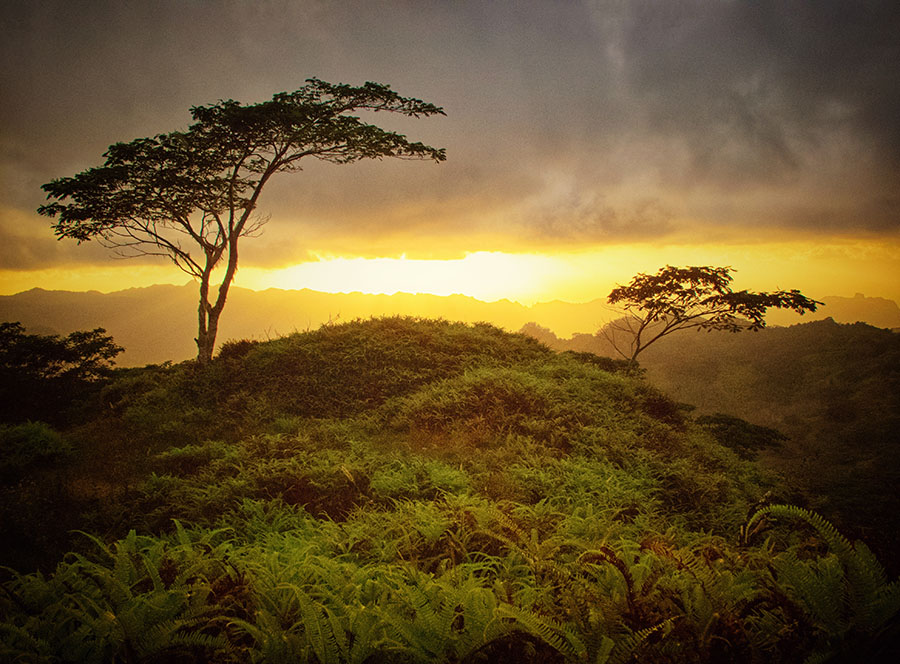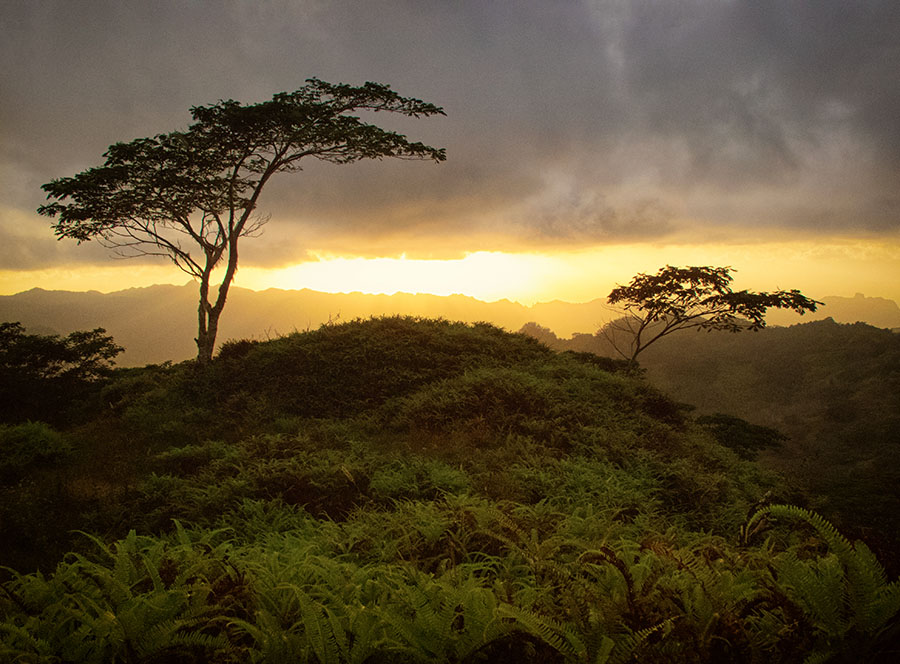
It’s called “white” balance because it’s often thought of as the color temperature of the white colors in your image—so a “correct” white balance would be one where the natural whites in your image are actually white and don’t have a red or blue tint. But, it’s important to remember that the white balance affects the entire image, not just the white colors.
The camera is usually pretty good at guessing the correct or most natural-looking white balance, but sometimes it’s not, and other times it’s mostly correct but you might still want to adjust the color temperature to emphasize the feeling of a photograph.
For example, one of the scenes that your camera usually has trouble with is sunrise or sunset, like in this photo I shot on the island of Nuku Hiva:

When I first saw this image, I was disappointed because I remembered the scene being much warmer with a much stronger red-orange glow that seemed to have been lost in the photograph. I was so disappointed that I initially ignored the image. Then, eight years later I was just going through old photos on a Sunday morning and saw this one again and said to myself, “wow, this is actually a pretty good photo, I just need to adjust the white balance a little bit.” So, I opened it up in Photoshop, made the entire image “warmer” and ended up with this new image:

I decided to go a little beyond what was natural, in order to emphasize the warmth of the scene. I think it’s okay to do this, as long as the effect isn’t too drastic.
So, next time you photograph a landscape at sunrise or sunset, think about the temperature of the scene. If the scene has more blue/purple colors and feels “cold,” then make sure your white balance is adjusted properly and consider making it even more “cold” to emphasize that feeling. On the other hand, if the scene has a more “warm” feeling with lots of reds and oranges, then consider making the scene a little warmer.
Get more nature photography tips in our free weekly newsletter
 About the Author: Steve Berardi is a nature photographer, software engineer, and founder of PhotoNaturalist. You can usually find him hiking in the beautiful mountains and deserts of southern California.
About the Author: Steve Berardi is a nature photographer, software engineer, and founder of PhotoNaturalist. You can usually find him hiking in the beautiful mountains and deserts of southern California.
Yo Ho Steve your work is super and your training and sharing is excellent and very knowledgeable. cheers, jon
I have been photographing nature for about 40 years. I am lost in this digital age and would have no clue how to process or change the white balance on a computer. I have to take whatever I get from the camera and live with it.